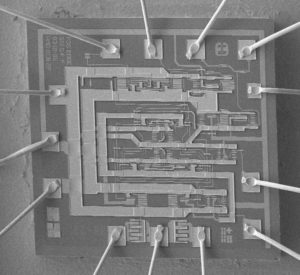Extract Microcontroller PIC18F8310 Code
Extract Microcontroller PIC18F8310 Code from its memory include flash and eeprom, the code will be replicated to blank MCU and provide the same functions as orignal MCU;

Extract Microcontroller PIC18F8310 Code from its memory include flash and eeprom, the code will be replicated to blank MCU and provide the same functions as orignal MCU
The EC and ECIO Oscillator modes require an external clock source to be connected to the OSC1 pin. There is no oscillator start-up time required after a Power-on Reset or after an exit from Sleep mode.
In the EC Oscillator mode, the oscillator frequency divided by 4 is available on the OSC2 pin. This signal may be used for test purposes or to synchronize other logic. Figure 2-3 shows the pin connections for the EC Oscillator mode.
The ECIO Oscillator mode functions like the EC mode, except that the OSC2 pin becomes an additional general purpose I/O pin. The I/O pin becomes bit 6 of PORTA (RA6). For timing insensitive applications, the “RC” and “RCIO” device options offer additional cost savings. The actual oscillator frequency is a function of several factors:
· Supply voltage
· Values of the external resistor (REXT) and capacitor (CEXT)
A Phase Locked Loop (PLL) circuit is provided as an option for users who want to use a lower frequency oscillator circuit, or to clock the device up to its highest rated frequency from a crystal oscillator. This may be useful for customers who are concerned with EMI due to high-frequency crystals, or users who require higher clock speeds from an internal oscillator.
· Operating temperature
Given the same device, operating voltage and temperature and component values, there will also be unit-to-unit frequency variations. These are due to factors such as:
· Normal manufacturing variation
· Difference in lead frame capacitance between package types (especially for low CEXT values)
· Variations within the tolerance of limits of REXT and CEXT
In the RC Oscillator mode, the oscillator frequency divided by 4 is available on the OSC2 pin. This signal may be used for test purposes or to synchronize other logic. Figure 2-5 shows how the R/C combination is connected.
A Phase Locked Loop (PLL) circuit is provided as an option for users who want to use a lower frequency oscillator circuit, or to clock the device up to its highest rated frequency from a crystal oscillator in the process of MCU Reading. This may be useful for customers who are concerned with EMI due to high-frequency crystals, or users who require higher clock speeds from an internal oscillator.
The HSPLL mode makes use of the HS Oscillator mode for frequencies up to 10 MHz. A PLL then multiplies the oscillator output frequency by 4 to produce an internal clock frequency up to 40 MHz.
The PLL is only available to the crystal oscillator when the FOSC3:FOSC0 configuration bits are programmed for HSPLL mode (= 0110).
Tags: extract microcontroller protected archive,extract microcontroller protected code,extract microcontroller protected content,extract microcontroller protected data,extract microcontroller protected eeprom,extract microcontroller protected file,extract microcontroller protected firmware,extract microcontroller protected information,extract microcontroller protected memory,extract microcontroller protected program

